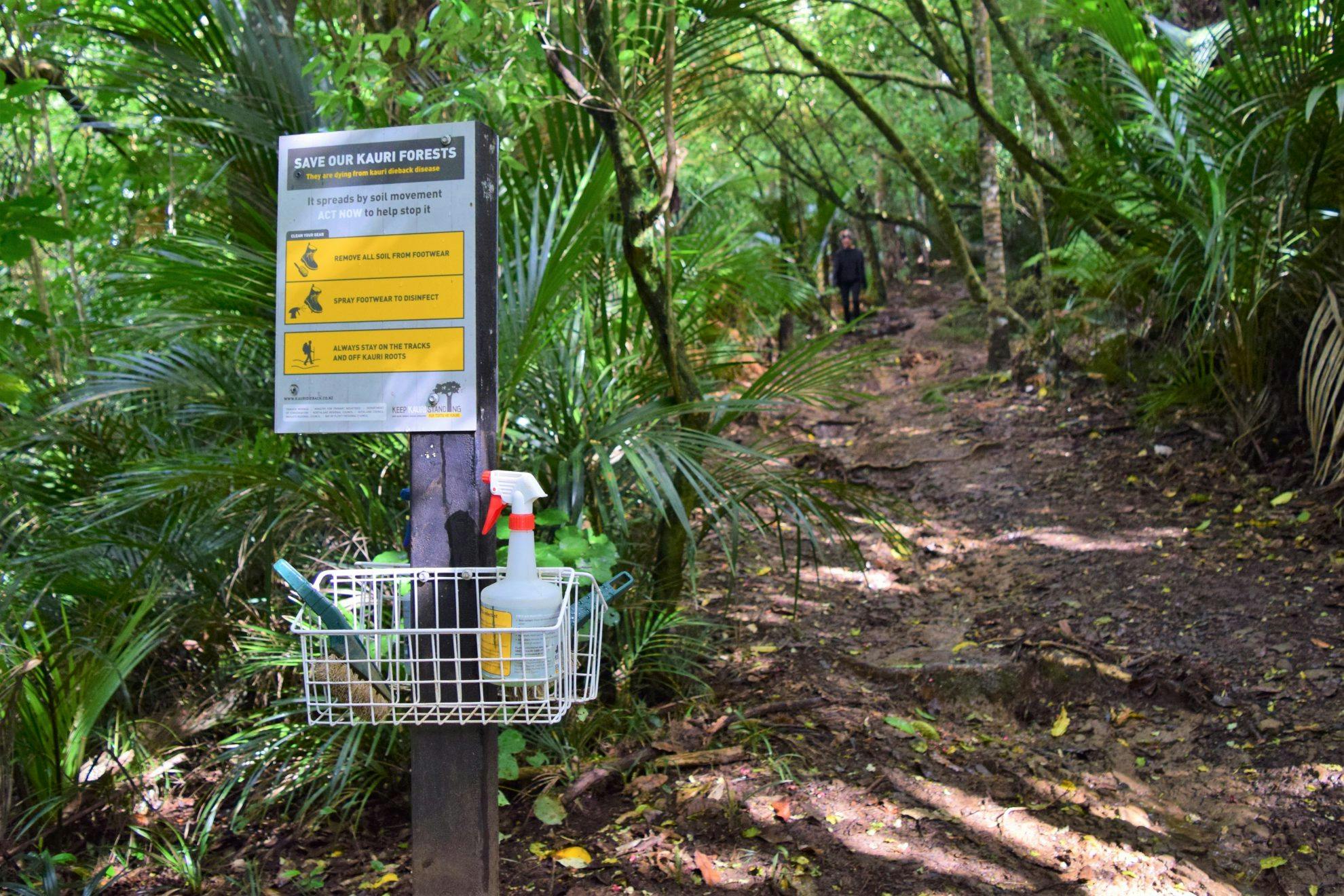The Waitakere Ranges will be closed by May, as Auckland Council voted to to prevent the spread of kauri dieback disease.
All high risk tracks in the dieback-free Hunua Ranges will also be closed.
The proposal passed unanimously.
A report, presented to council’s Environment Committee today, said council’s approach so far had been a failure.
In December, it closed 83km of tracks and encouraged people to observe a rahui (customary prohibition) on the forest. However, monitoring of tracks found the number of people who used hygiene stations before entering the forest remained low and people were ignoring closed tracks and weren’t observing the rahui.
The Waitakere closure only applies to forested areas. Beaches, pastureland and tracks which had been upgraded and had a very low risk of soil being disturbed would remain open.
Mayor Phil Goff said it was one of the most important issues the council was facing. He said he supported closing the Waitakere Ranges, but said selected low-risk tracks should remain open.
“If there are areas with minimal risk, we can give people the option to go somewhere that’s safe,” Goff said. “If it is safe and we say you can’t go there, it affects our credibility.”
Presenting to the council, Waitakere Local Board chair Greg Presland said kauri were facing extinction, and called on council to close the forest.
“The disease is spreading like a cancer along the tracks of the Waitakere Ranges,” Presland said.
He said car parks at popular walks were full over the summer and the use of cleaning stations was fundamentally flawed.
“Even if people have pristine footwear, when they walk past a diseased kauri they will pick up mud and spread the disease along the track.”
Council biosecurity manager Phil Brown said kauri ambassadors, who were stationed at the start of some tracks to raise awareness of the disease and rahui, found many people ignored measures to prevent dieback spreading. Ambassadors spoke to around 30,000 people in the ranges this summer. Brown said one ambassador commented: “Aucklanders are by far the worst visitors. The level of ignorance [of kauri dieback] is very concerning.”
Brown said enforcing the ban would be expensive. To monitor the closures to achieve a 95 per cent compliance rate at both ranges would cost $40 million a year.
Brown recommended periodic patrols at the most popular tracks during peak periods, which would cost $2-3 million a year and could achieve 80 per cent compliance.
Brown said the costs of enforcement meant there would be less money for track upgrades, which would mean many tracks would have to stay closed.
But regional parks manager Rachel Kelleher said tracks in the Hunua Ranges could be reopened once upgraded or rerouted away from kauri.
“We don’t want the perverse outcome of pushing people from the Waitakeres to the Hunuas without appropriate measures,” Kelleher said.
She said the council gets $80,000 a year from concessions for businesses to operate in the ranges and there could be a compensation payout if businesses couldn’t continue. The amount of the compensation wasn’t clear, she said.
The council was also consulting on a massive increase in dieback spending, from $590,000 to $8.8 million, which would be funded by a targeted rate.
The closures could be enforced by trespassing people on tracks. The Ministry for Primary Industries is also investigating a Controlled Area Notice for kauri dieback which would make it a legal requirement for people to clean their boots before entering a kauri forest.
The closures were contingent on further consultation with local iwi and other stakeholders.
View maps of the tracks closed in the Hunua Ranges: Hunua Closures







